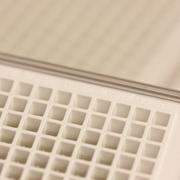
We here at the DRSC/TRiP are thrilled to see this study from Hilary Nicholson et al. published in Science Signaling.
The study provides a great example of how screens in Drosophila cultured cells can be used as part of a cross-species platform aimed at discovery of new targets for disease treatment. The work represents a collaboration between the laboratory of 2019 Nobel Prize winner W. Kaelin and DRSC PI N. Perrimon.
Sci Signal. 2019 Oct 1;12(601).
HIF-independent synthetic lethality between CDK4/6 inhibition and VHL loss across species.
Nicholson HE(1), Tariq Z(1), Housden BE(2), Jennings RB(1)(3), Stransky LA(1), Perrimon N(2)(4), Signoretti S(1)(3), Kaelin WG Jr(5)(4).
Author information:
(1)Department of Medical Oncology, Dana-Farber Cancer Institute, Harvard Medical
School, Boston, MA 02215, USA.
(2)Department of Genetics, Harvard Medical School, Boston, MA 02115, USA.
(3)Department of Pathology, Brigham and Women's Hospital, Harvard Medical School,
Boston, MA 02115, USA.
(4)Howard Hughes Medical Institute, Chevy Chase, MD 20815, USA.
(5)Department of Medical Oncology, Dana-Farber Cancer Institute, Harvard Medical
School, Boston, MA 02215, USA. william_kaelin@dfci.harvard.edu.\
Abstract:
Inactivation of the VHL tumor suppressor gene is the signature initiating event in clear cell renal cell carcinoma (ccRCC), the most common form of kidney cancer, and causes the accumulation of hypoxia-inducible factor 2α (HIF-2α). HIF-2α inhibitors are effective in some ccRCC cases, but both de novo and acquired resistance have been observed in the laboratory and in the clinic. Here, we identified synthetic lethality between decreased activity of cyclin-dependent kinases 4 and 6 (CDK4/6) and VHL inactivation in two species (human and Drosophila) and across diverse human ccRCC cell lines in culture and xenografts. Although HIF-2α transcriptionally induced the CDK4/6 partner cyclin D1, HIF-2α was not required for the increased CDK4/6 requirement of VHL-/- ccRCC cells. Accordingly, the antiproliferative effects of CDK4/6 inhibition were synergistic with HIF-2α inhibition in HIF-2α-dependent VHL-/- ccRCC cells and not antagonistic with HIF-2α inhibition in HIF-2α-independent cells. These findings support testing CDK4/6 inhibitors as treatments for ccRCC, alone and in combination with HIF-2α inhibitors.
PMID: 31575731
